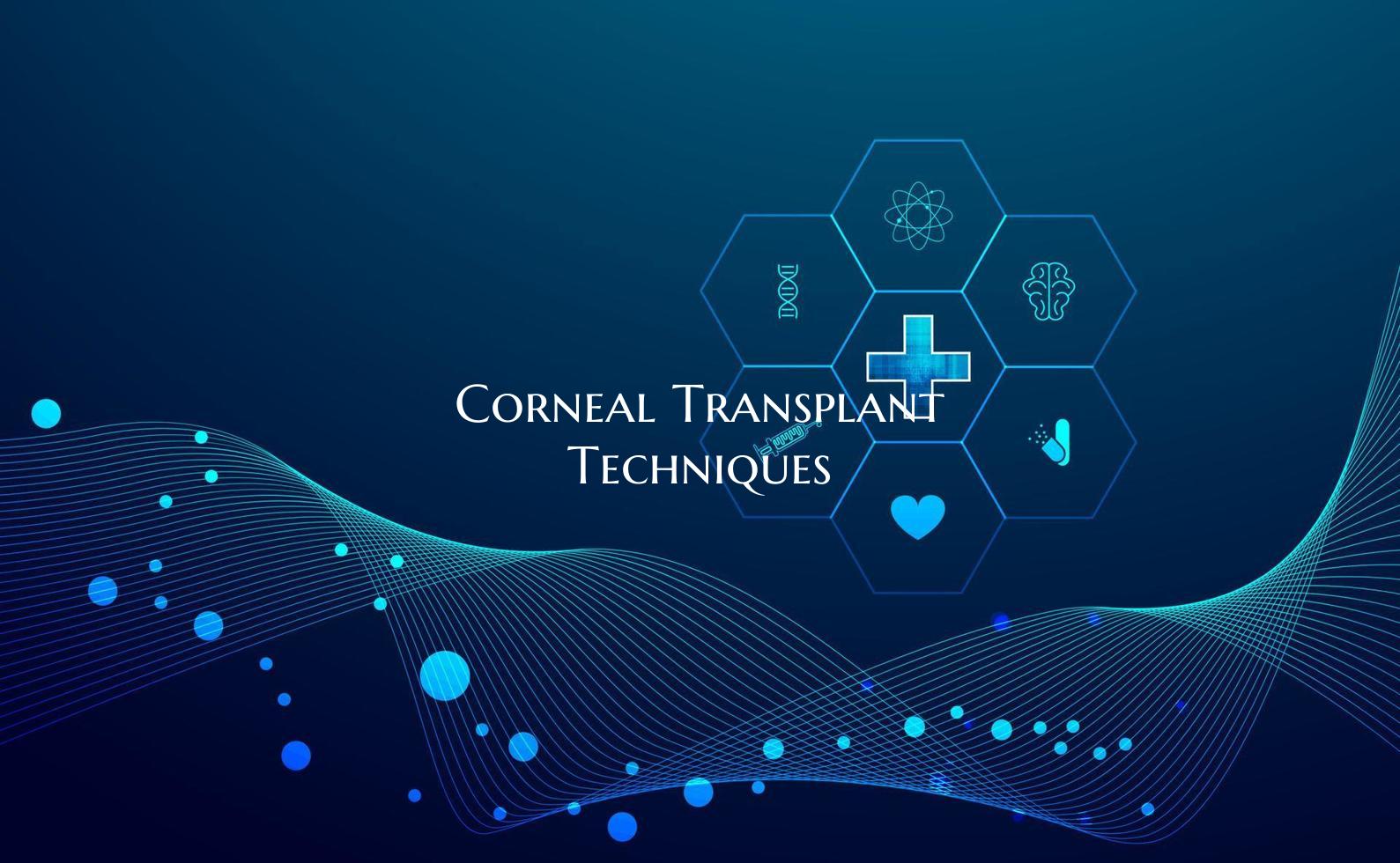
Corneal Transplant Techniques
Corneal Transplant Techniques
Corneal transplant, also known as corneal grafting, is a surgical procedure performed to replace a damaged or diseased cornea with a healthy donor cornea. The cornea is the transparent, dome-shaped outer surface of the eye that plays a crucial role in focusing light onto the retina. When the cornea becomes damaged due to injury, infection, or disease, it can lead to vision problems and even blindness.
There are several types of corneal transplant techniques used by ophthalmic surgeons, depending on the specific condition of the patient's cornea:
1. Full-thickness Penetrating Keratoplasty (PK): This traditional method involves removing the entire damaged cornea and replacing it with a healthy donor cornea. The surgeon uses stitches to secure the donor cornea in place.
2. Lamellar Keratoplasty: This technique involves replacing only the outer or inner layer of the cornea, depending on the specific condition being treated. Types of lamellar keratoplasty include Descemet's stripping automated endothelial keratoplasty (DSAEK) and Descemet's membrane endothelial keratoplasty (DMEK).
3. Deep Anterior Lamellar Keratoplasty (DALK): In this technique, the surgeon removes the front layers of the cornea while leaving the back layer (endothelium) intact. DALK is often used in cases where the patient's endothelium is healthy, but the front layers of the cornea are damaged.
4. Femtosecond Laser-Assisted Keratoplasty: This advanced technique uses a laser to create precise incisions in the cornea, allowing for a more customized and controlled approach to corneal transplant surgery.
Regardless of the technique used, corneal transplant surgery is a delicate procedure that requires a skilled ophthalmic surgeon and careful post-operative care to ensure successful outcomes. Patients undergoing corneal transplant may experience improved vision and relief from symptoms associated with their corneal condition.
It is essential for individuals considering corneal transplant surgery to consult with their eye care provider to determine the most suitable technique based on their specific needs and condition. Overall, corneal transplant techniques have evolved over the years, offering new possibilities for restoring vision and improving the quality of life for individuals with corneal disorders.